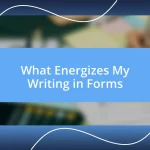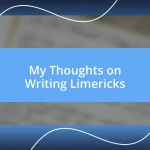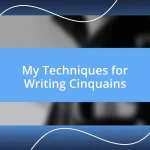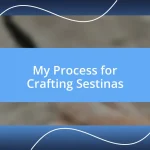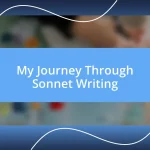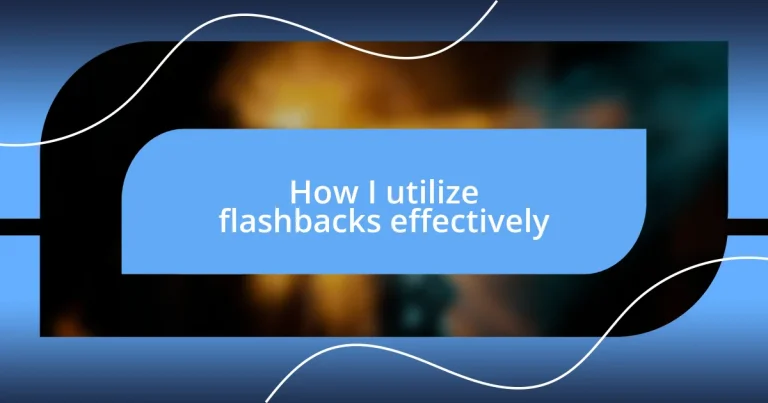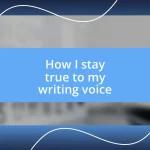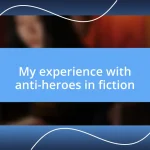Key takeaways:
- Flashbacks serve to deepen character development, emotional engagement, and narrative complexity, enhancing readers’ understanding and connection to the story.
- Different types of flashbacks (memory, dream, narrative) each have unique purposes, such as revealing backstory, creating tension, or providing context for characters’ current behaviors.
- Effective integration of flashbacks requires careful timing, sensory detail, and emotional weight to maintain narrative flow and avoid confusion for readers.
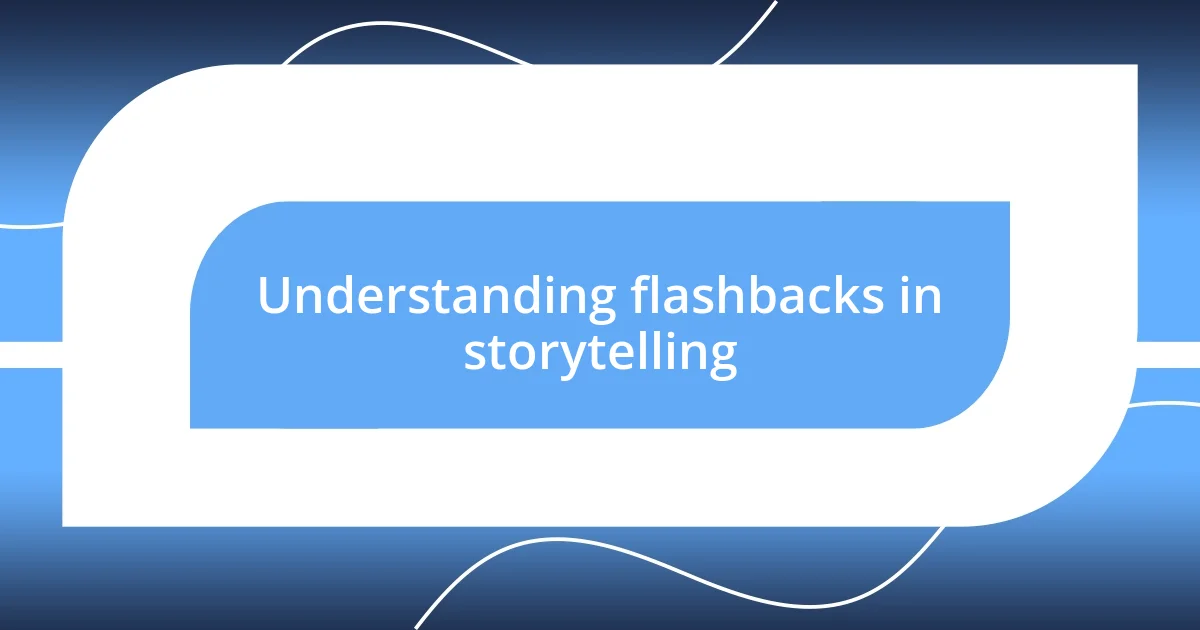
Understanding flashbacks in storytelling
Flashbacks are powerful tools in storytelling, offering a glimpse into a character’s past and revealing motivations that shape their current decisions. I often find it fascinating how a single moment from the past can illuminate a character’s actions in the present. Have you ever paused to reflect on a seemingly simple childhood memory that suddenly explains an adult’s complicated behavior?
When I first experimented with flashbacks in my writing, I noticed how they not only enhance the narrative but also build emotional connections. For instance, weaving a scene from a character’s childhood alongside their adult struggles can create a poignant contrast. It begs the reader to consider how our past molds our identities; don’t we all have moments that define us?
Moreover, the effective use of flashbacks can deepen plot complexity, adding layers that keep readers engaged. I recall crafting a flashback for a character grappling with loss; it was a risk, but it paid off in emotional depth. Have you found that flashbacks can transform a simple narrative into something more resonant and impactful? The key lies in balancing these elements so they enhance rather than disrupt the flow of the story.
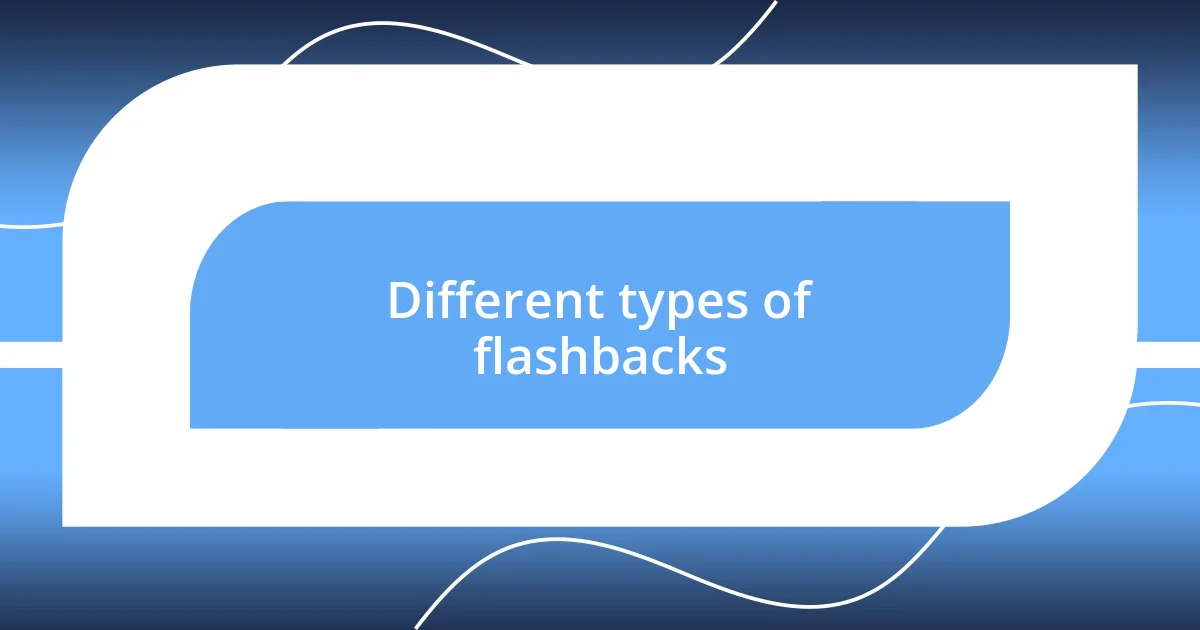
Different types of flashbacks
Flashbacks can take on several forms, each serving a distinct purpose in storytelling. One common type is the memory flashback, where a character suddenly recalls a significant moment from their past, often triggered by an event or emotion in the present. I once wrote a scene where a character caught a glimpse of a family photo, instantly flooding them with memories of happier times. This technique allows readers to feel the weight of nostalgia and understand the character’s current turmoil.
Another type is the dream flashback, a more surreal approach that often blurs the lines between reality and memory. I remember using this in a story with a character struggling with trauma. Their dreams would replay haunting scenes, making them question what was real versus imagined. This can not only create tension but also reflect the complexity of the character’s subconscious, captivating readers as they navigate this confusing landscape with them.
Lastly, we have narrative flashbacks, where the story shifts to depict events from the past in a more structured manner. I once wrote an entire chapter that transported readers back to my protagonist’s childhood, offering deeper context for their present behavior. This method is particularly effective in fleshing out backstory, helping readers connect emotionally with the characters on a more profound level.
| Type of Flashback | Description |
|---|---|
| Memory Flashback | A sudden recall of a significant past event, triggered by the present. |
| Dream Flashback | A surreal depiction of memories through dreams, blurring reality. |
| Narrative Flashback | Structured storytelling depicting past events for deeper context. |
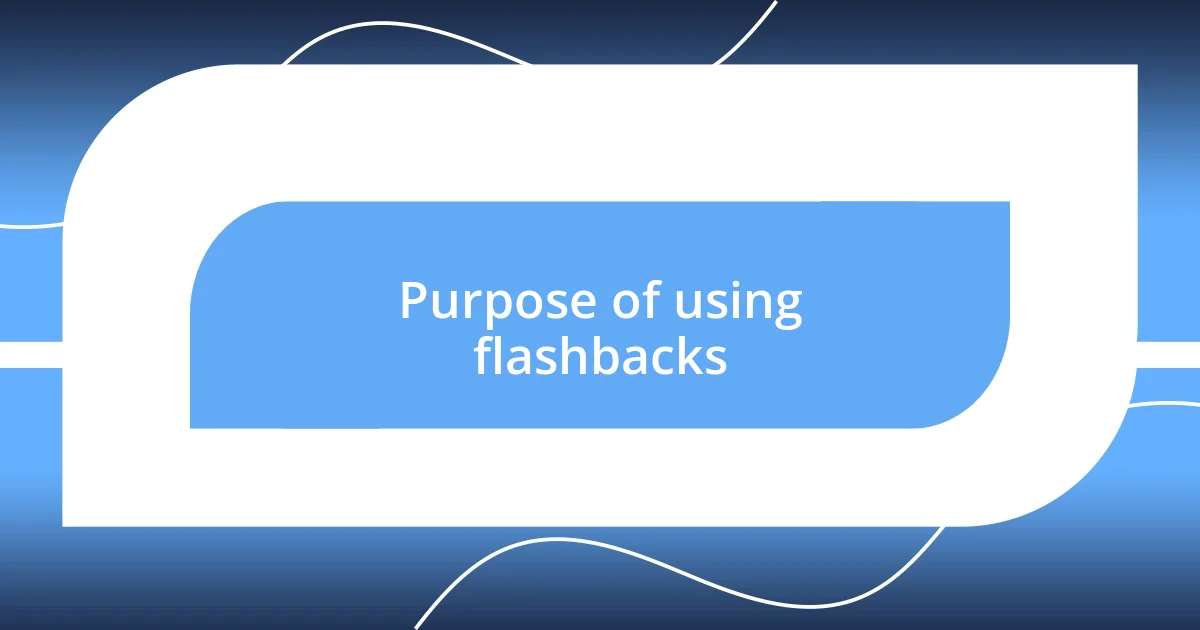
Purpose of using flashbacks
In my writing journey, I’ve come to appreciate the multifaceted purpose of flashbacks. Not only do they provide a deeper understanding of characters, but they also create emotional resonance that can evoke empathy from readers. I still remember a particular story where I introduced a flashback of a family dinner. It set the stage for understanding a character’s fear of intimacy. When readers glimpsed that small moment of warmth, it explained so much about their present struggles, making the flow of emotions feel richer and more nuanced.
Using flashbacks effectively also plays a crucial role in pacing and tension. They can serve as a pause in the unfolding action, allowing readers to digest the gravity of what’s happening now while reflecting on the past. For instance, when I had a character facing a life-altering choice, I paused the action to slip in a flashback of their childhood dream. Suddenly, the stakes felt higher. Below are some purposes I find essential when utilizing flashbacks:
- Character Development: They reveal backstory, shaping our understanding of a character’s motivations.
- Emotional Engagement: Flashbacks elicit feelings, creating a bond between the character and the reader.
- Narrative Depth: They help build layers in the story, enriching the overall theme and plot.
- Pacing Control: Flashbacks can slow the narrative, allowing important moments to resonate longer.
- Thematic Connection: Linking past events to current decisions emphasizes the story’s core themes.
These elements intertwine to create a tapestry of narrative richness, drawing readers into a more immersive experience.
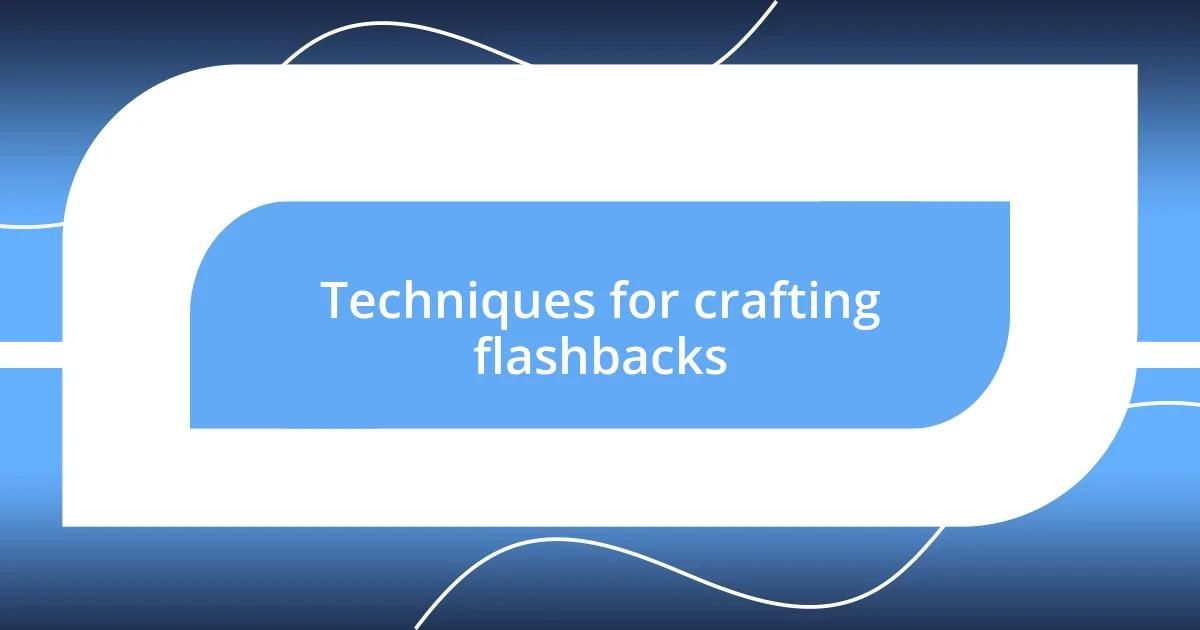
Techniques for crafting flashbacks
When crafting flashbacks, one technique I find immensely useful is the use of specific sensory details. By describing a character’s surroundings—like the sound of laughter or the scent of a favorite dish—I create a strong connection to the past. I once described the smell of fresh baked cookies filling a kitchen, which immediately transported my character back to their grandmother’s house. This technique not only enhances the emotional impact but also makes the flashback more vivid and relatable to the reader. Have you ever been triggered by a scent? It’s amazing how it can bring memories flooding back, isn’t it?
Another effective approach is to integrate flashbacks seamlessly into the narrative flow. I often choose to weave flashbacks into a character’s current dialogue or thoughts, making them feel like a natural extension of the moment. For example, I had a character reflecting deeply during a tense conversation and suddenly recalled a similar argument from their past. This made the reader feel the weight of the moment. It raises the question: how does our past shape our present interactions? I believe that connecting the past to current situations enhances the reader’s investment in the story.
Finally, the emotional stakes of a flashback can be heightened by tying them to a pivotal moment in the present narrative. When I wanted to reveal a character’s deep-seated fear, I inserted a flashback triggered by a situation that mirrored a traumatic event from their past. This not only provided context but also increased tension significantly. Readers were left wondering how the character would cope. The key takeaway for me is to consider what you want the flashback to achieve and how it can enhance emotional engagement—after all, isn’t that the heart of storytelling?
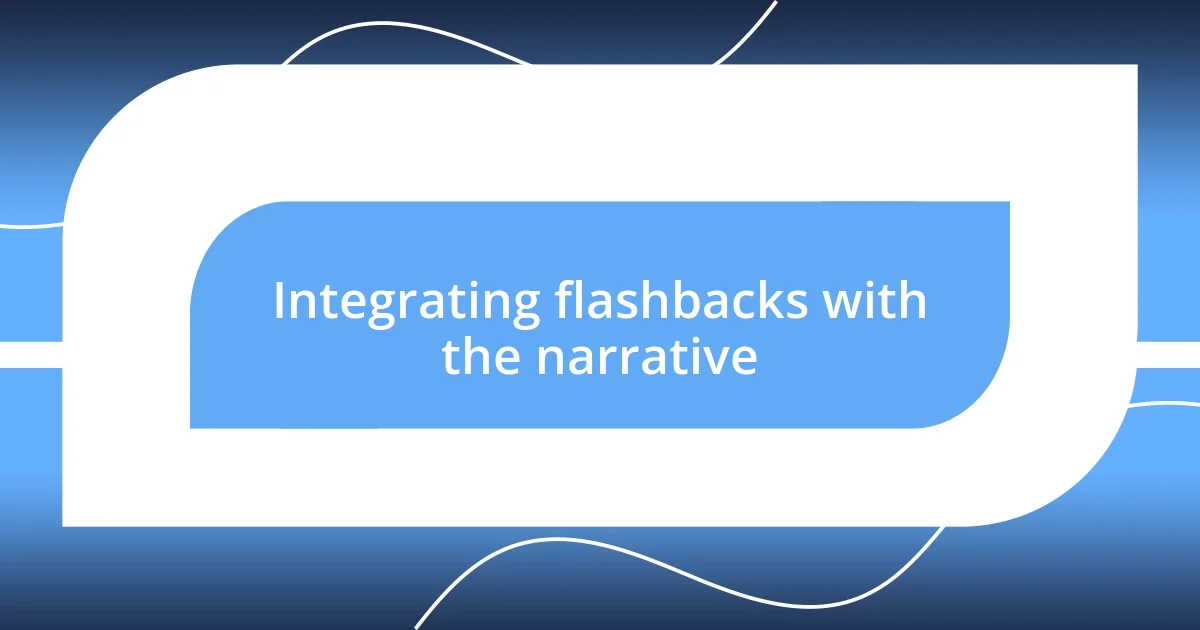
Integrating flashbacks with the narrative
Integrating flashbacks into the narrative requires a delicate touch. I’ve found that establishing a clear connection between the present and the past is essential for maintaining momentum. Once, I inserted a flashback just as a character discovered an old photograph, instantly linking their present emotions of nostalgia and regret. It felt like inviting the reader into a time machine, allowing them to experience the character’s internal conflict firsthand. Have you noticed how certain artifacts can evoke buried memories? It’s a powerful tool.
Another aspect I often consider is the placement of flashbacks. Timing is everything; inserting a flashback at just the right moment can amplify the tension. In one instance, I placed a flashback during a climactic confrontation. The memory of a past betrayal flickered as the character faced their antagonist, raising the stakes significantly. It made the reader wonder—how do we confront our past when it collides with our present? This question lingers long after reading, keeping them engaged.
Moreover, I find that balancing flashbacks with the ongoing narrative is key to a smooth reading experience. If executed poorly, flashbacks can feel jarring or disruptive. I aim for transitions that flow naturally—like a gentle wave washing over the narrative. In a story about reconciliation, I used a brief interlude of a family conflict, transitioning seamlessly into the character’s current struggle for forgiveness. This kind of flow invites readers to explore the intricacies of life’s moments, blurring the lines between what has happened and what is happening. Isn’t that what we strive for in storytelling?
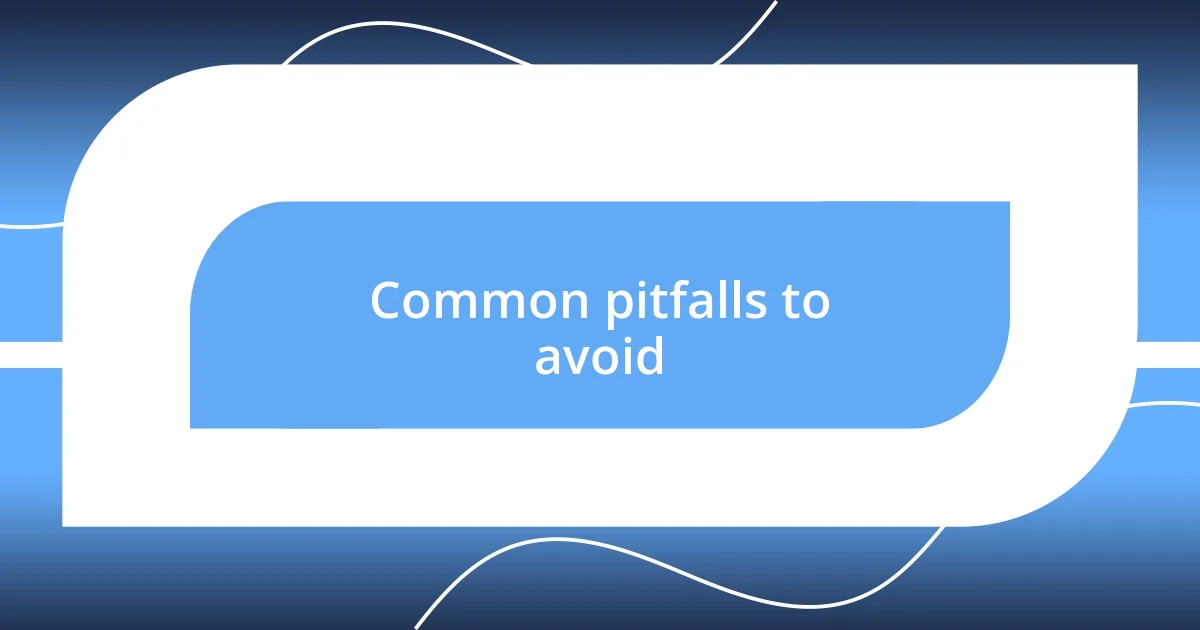
Common pitfalls to avoid
It’s easy to fall into the trap of overusing flashbacks. I’ve experienced this firsthand—in an earlier story, I included multiple flashbacks within a short span, which ended up confusing my readers. They struggled to keep track of the timeline, and the emotional impact was diluted. I learned that less is often more; using flashbacks with intention makes each one resonate more deeply. Have you ever found yourself lost in a story because of too many shifts in time?
Another pitfall to avoid is failing to ground the reader in the present before diving into a flashback. I remember a time when I launched right into a memory without setting the stage. The result? My readers were left momentarily bewildered, unsure of where they were. I now make it a point to establish a strong connection to the current scene before introducing a flashback, ensuring that the transition feels purposeful rather than haphazard. Isn’t it crucial for readers to feel anchored in the narrative before they journey into the past?
Lastly, I’ve noticed that some writers tend to neglect the emotional weight of their flashbacks. When I first attempted to write a flashback showing a lost childhood friendship, I focused too much on the event itself instead of conveying the heartfelt nostalgia that should accompany it. Reflecting on this, I realized that capturing the raw emotions tied to those memories creates a stronger bond with the reader. After all, isn’t it the emotional undercurrent that truly brings our stories to life?
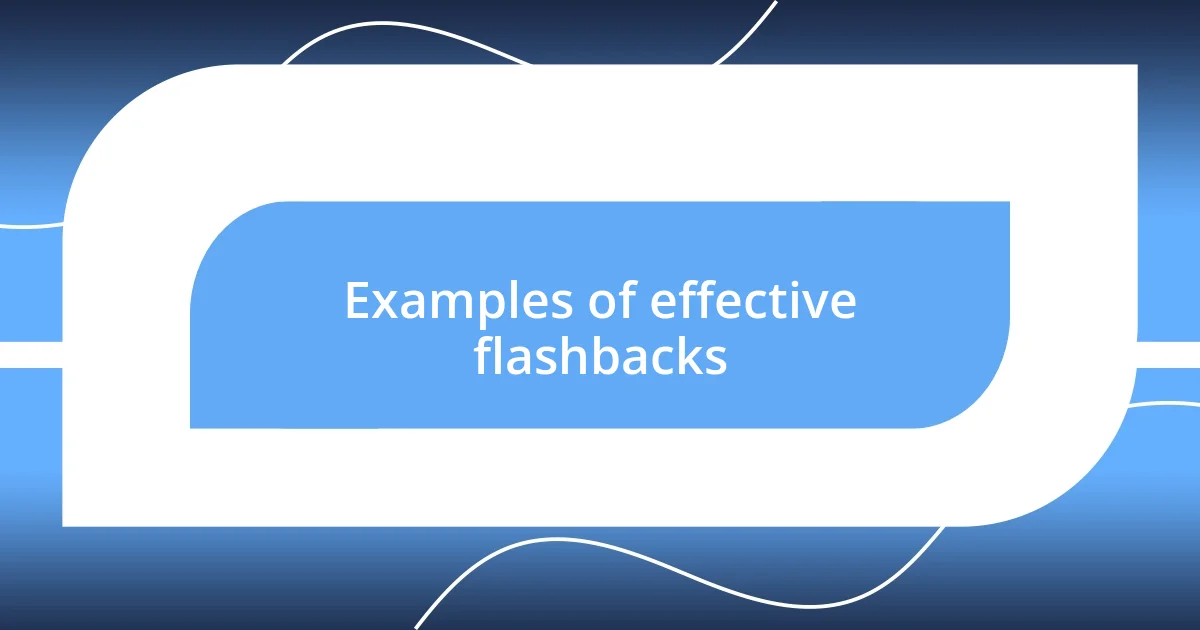
Examples of effective flashbacks
When I think about effective flashbacks, one clear example springs to mind. In a recent short story, I crafted a flashback that unveiled a cherished childhood camping trip just as my main character set out on a new journey. The contrast between her childhood innocence and the weight of adult responsibilities created a poignant moment. It wasn’t just about the trip; it was about how those carefree days shaped her current fears and dreams. Have you ever had a memory suddenly light up a present moment?
Another impactful instance occurred when I used a flashback to reveal a secret that had torn a family apart. As the siblings faced each other during a heated argument, the memory of a shared birthday celebration, now shadowed by betrayal, flicked across the page. This not only deepened their conflict but also forced readers to grapple with the complexities of family loyalty. I’ve found that uncovering such layers really enhances emotional stakes. Doesn’t it make you reflect on how past events can linger in our current relationships?
I also remember a time when a character encountered an old journal. As she read a passage from her teenage self, the flashback brought to life a moment of heartbreak and hope—a first love that shaped her view on relationships. It was a delightful way to make the character’s inner turmoil tangible, echoing throughout the narrative. This seamless shift into the past added a rich layer of depth and realism, enticing the reader to journey with her through both joy and sorrow. How does your own past influence the choices you make today?


